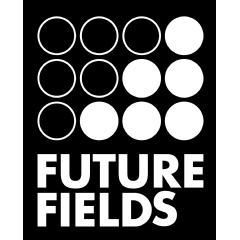Special flower visiting flies: a hover fly (Eristalis tenax) (left picture) and a bee fly (Poecilanthrax apache) (right picture). Photo credit: Michael Becker, Pdeley
We all know that birds and bees are important for pollination, and we often notice them in gardens and parks. But what about flying?
Flies are the second most common type of pollinator, so maybe we should all learn about the bees, the flies, and then the birds. While we know that animals can see colors differently, little was known about how fly pollination shapes the types of flowers we can find in nature.
In our new study, we close this knowledge gap by examining the importance of fly pollinators perceiving and using color, and how flowers pollinated by flies developed color signals.
The way we see affects what we choose
We know that different people often have preferences for certain colors, and similarly, bees prefer shades of blue.
Our colleague Lea Hannah has observed that hoverflies (Eristalis tenax) can distinguish between different shades of yellow much better than between different shades of blue. Other research has also reported that hoverflies have innate responses to yellow colors.
Many flowering plants rely on attracting pollinators in order to reproduce, so the appearance of their flowers has evolved to suit pollinator preferences. We wanted to find out what this could mean for how different insects like bees or flies shape the flower colors in a complex natural environment where both types of insects occur.
The Australian case study
Due to its geological isolation, Australia is a natural laboratory for understanding flower development. In mainland Australia, flowers have predominantly developed colors to match animal pollination.
There are plant communities around Australia with different pollinators. For example, on Macquarie Island there are no bees and flies are the only animal pollinators.
We collected data from a variety of locations, including a native habitat on mainland Australia where both bees and flies forage for food, to model how different insects affect the development of flower color signals.
Typical flowers preferred by bees (Lobelia rhombifolia, left picture) and flies (Pterostylis melagramma, right picture) that can be found in our study locations. Insets show the spectral profile for each species as measured with a spectrometer. Photo credit: Mani Shrestha
Measure flower colors
Since we know that different animals perceive colors in different ways, we recorded the spectrum of the different wavelengths of the light reflected from the flowers with a spectrometer. We then modeled these spectral signatures of plant flowers taking animal perception into account, which enables us to objectively quantify how signals have evolved. These analyzes included mapping the evolutionary lineage of the plants.
Generalization or Specialization?
According to one school of thought, flower development is driven by competition between flowering plants. In this scenario, different species can have very different colors to increase their chances of reliable identification and pollination. This is a bit like how exclusive brands seek customers by having easily identifiable branding.
An alternative hypothesis to competition is facilitation. Plants can share preferred color signals to attract a greater number of specific insects. That explanation is how some competing companies can do better when they are physically close to each other to attract lots of customers.
Our results show how the signaling of the flower color has developed dynamically depending on the availability of insect pollinators, as is the case in marketplaces.
In Victoria, the flowers have converged to develop color signals preferred by their pollinators. The flowers of fly-pollinated orchids are typically yellowish-green, while closely related orchids that are pollinated by bees are more bluish and purple in color. The flowers appeared to share the preferred colors of their main pollinator, which is a relief hypothesis.
Our research has shown that in response to the local “market” for pollinators, flies can detect differences between flowers of different species.
On Macquarie Island, where flies are the only pollinators, the flower colors differ from one another – but still remain in the range of the preferred colors of the flies. This is in line with a competitive strategy where differences between plant species allow flies to more easily see the color of recently visited flowers.
When both fly and bee pollinators are present, fly-pollinated flowers appear to “filter out” bees to reduce the number of ineffective and opportunistic visitors. For example, specialized plants in the Himalayas require flies with long tongues to get floral rewards. This is comparable when a store only wants to attract customers who are specifically interested in its range.
Our findings on the color vision of flies, together with novel precision farming techniques, can help flies to be used as alternative pollinators for crops. It also enables us to understand that if we are to see a whole range of pollinating insects, including beautiful hoverflies, in our parks and gardens, we must plant a range of types and colors of flowers.
Keeping the balance: compromises shape the variety of flowers
More information:
Jair E. Garcia et al., Fly Pollination Drives Convergence of Flower Color, New Phytologist (2021). DOI: 10.1111 / nph.17696 Provided by The Conversation
This article was republished by The Conversation under a Creative Commons license. Read the original article.![]()
Quote: Flies like yellow, bees like blue: How flower colors respond to the taste of pollinating insects (2021, September 2), accessed on September 2, 2021 from https://phys.org/news/2021-09-flies-yellow- bees-blue-cater.html
This document is subject to copyright. Except for fair trade for private study or research purposes, no part may be reproduced without written permission. The content is provided for informational purposes only.








